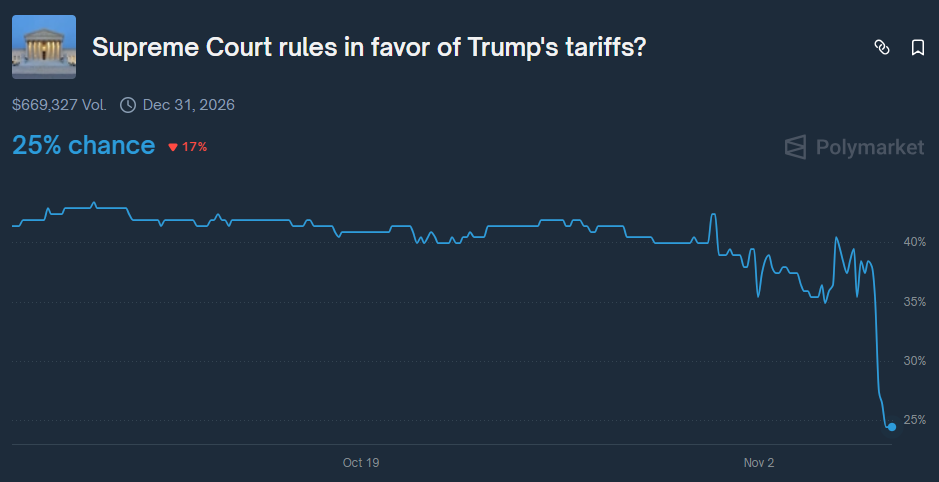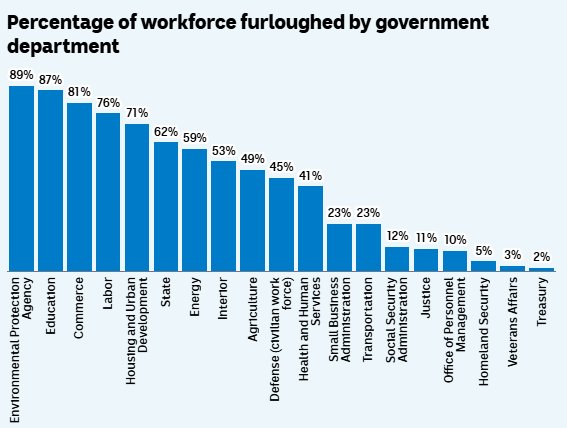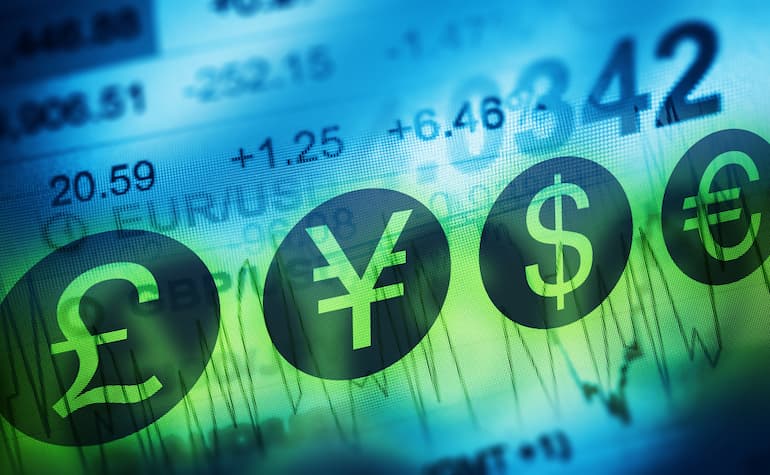市场资讯及洞察

Artificial intelligence stocks have begun to waver slightly, experiencing a selloff period in the first week of this month. The Nasdaq has fallen approximately 2%, wiping out around $500 billion in market value from top technology companies.

Palantir Technologies dropped nearly 8% despite beating Wall Street estimates and issuing strong guidance, highlighting growing investor concerns about stretched valuations in the AI sector.
Nvidia shares also fell roughly 4%, while the broader selloff extended to Asian markets, which experienced some of their sharpest declines since April.
Wall Street executives, including Morgan Stanley CEO Ted Pick and Goldman Sachs CEO David Solomon, warned of potential 10-20% drawdowns in equity markets over the coming year.
And Michael Burry, famous for predicting the 2008 housing crisis, recently revealed his $1.1 billion bet against both Nvidia and Palantir, further pushing the narrative that the AI rally may be overextended.
As we near 2026, the sentiment around AI is seemingly starting to shift, with investors beginning to seek evidence of tangible returns on the massive investments flowing into AI, rather than simply betting on future potential.
However, despite the recent turbulence, many are simply characterising this pullback as "healthy" profit-taking rather than a fundamental reassessment of AI's value.
Supreme Court Raises Doubts About Trump’s Tariffs
The US Supreme Court heard arguments overnight on the legality of President Donald Trump's "liberation day" tariffs, with judges from both sides of the political spectrum expressing scepticism about the presidential authority being claimed.
Trump has relied on a 1970s-era emergency law, the International Emergency Economic Powers Act (IEEPA), to impose sweeping tariffs on goods imported into the US.
At the centre of the case are two core questions: whether the IEEPA authorises these sweeping tariffs, and if so, whether Trump’s implementation is constitutional.
Chief Justice John Roberts and Justice Amy Coney Barrett indicated they may be inclined to strike down or curb the majority of the tariffs, while Justice Brett Kavanaugh questioned why no president before Trump had used this authority.
Prediction markets saw the probability of the court upholding the tariffs drop from 40% to 25% after the hearing.

The US government has collected $151 billion from customs duties in the second half of 2025 alone, a nearly 300% increase over the same period in 2024.
Should the court rule against the tariffs, potential refunds could reach approximately $100 billion.
The court has not indicated a date on which it will issue its final ruling, though the Trump administration has requested an expedited decision.
Shutdown Becomes Longest in US History
The US government shutdown entered its 36th day today, officially becoming the longest in history. It surpasses the previous 35-day record set during Trump's first term from December 2018 to January 2019.
The Senate has failed 14 times to advance spending legislation, falling short of the 60-vote supermajority by five votes in the most recent vote.
So far, approximately 670,000 federal employees have been furloughed, and 730,000 are currently working without pay. Over 1.3 million active-duty military personnel and 750,000 National Guard and reserve personnel are also working unpaid.

SNAP food stamp benefits ran out of funding on November 1 — something 42 million Americans rely on weekly. However, the Trump administration has committed to partial payments to subsidise the benefits, though delivery could take several weeks.
Flight disruptions have affected 3.2 million passengers, with staffing shortages hitting more than half of the nation's 30 major airports. Nearly 80% of New York's air traffic controllers are absent.
From a market perspective, each week of shutdown reduces GDP by approximately 0.1%. The Congressional Budget Office estimates the total cost of the shutdown will be between $7 billion and $14 billion, with the higher figure assuming an eight-week duration.
Consumer spending could drop by $30 billion if the eight-week duration is reached, according to White House economists, with potential GDP impacts of up to 2 percentage points total.


USD drifted lower in Tuesday’s session, the US dollar index retracing a good chunk of Mondays gains. Regional bank fears were at the fore, with NYCB continuing its steep decline in an otherwise quiet session news wise. This saw the haven of bonds bid, sending yields lower and dragging the USD down with them.
DXY dipping back below its 100 Day SMA. AUD outperform after a hawkish hold from the RBA in their February meeting on Tuesday. The Aussie Central Bank left rates unchanged as expected, but in a break with other major central banks, that have recently removed their tightening bias messaging, stated that further rate hikes cannot be ruled out.
AUDUSD pushing up to test the Support/Resistance level of 0.6525 which will be a key level to watch in the week ahead. Lower US yields causing a drop in yield differentials saw JPY gain, with USDJPY dipping below 148. A Reuters report that claimed that the BoJ is laying the groundwork to end NIRP by April also lending some support to the Japanese currency.
A weaker USD and some haven flows on bank fears saw gold bounce higher after two down sessions. XAUUSD continues to trade in a tight range with the upside capped at 2070 USD an ounce and good support to the downside around 2020.


USD was ultimately lower on Wednesday after a rollercoaster of a session. Broad risk-on sentiment early on saw the Dollar Index (DXY) plummet to hit a low of 102.77 until strong S&P Global Flash PMIs coupled with souring risk sentiment after a dismal US 5yr auction saw a sharp turn-around. DXY retaking the 103 handle at session end, with the 50% Fib resistance the level to watch on the upside.
CAD was under pressure with steep losses against all majors in the aftermath of the BoC rate decision. The Bank of Canada held rates at 5.0% as expected but the Bank's decision to omit language that it is prepared to raise rates further if needed was seen as a dovish and hammered the CAD lower, USDCAD moving higher to 1.3525 and looking set to re-test the resistance level at 1.3541. EUR saw decent gains against the USD.
Europe saw beats in Flash PMIs headline figures for EU, German and French Manufacturing which supported the single currency. Though EURUSD was unable to hold the key resistance and psychological level of 1.09 as USD strength returned later in the session. EUR traders also have the ECB rate decision to look forward to later in the session, the ECB is expected to hold, but as always it will be the messaging traders will be watching.
GBP also saw strength in the aftermath of strong UK PMIs, as manufacturing, Services, and Composite all topped expectations. GBPUSD rallied to test the trend line resistance before pulling back on USD strength, with 1.2772 being a key level to watch in today’s session.


USD saw gains on Thursday with the US Dollar index (DXY) pushing above 104 before again finding resistance at the 100-day SMA. A rise in UST yields after a better than expected jobless claims figures. In data ahead Dollar traders will be focussing on the US CPI revisions.
EUR was mostly flat vs the Dollar with EURUSD trading down to 1.0750 before rebounding. ECB speak saw Wunsch state he sees some indications, not strong ones, that wage growth is softening, while Holzmann suggested there is a chance the ECB will not cut rates this year. JPY was the G10 underperformer after commentary from BoJ officials that was perceived as dovish.
Deputy Governor Uchida hinting that the BoJ will not aggressively hike rates, even after ending NIRP. USDJPY jumped to a high of 149.46 with the move higher in rate differential also lending support to this pair. AUD and NZD sold off after softer than expected China inflation data.
AUDUSD dropping back below the key 0.65 level, NZDUSD testing support at 0.6075 before retracing modestly. This also saw AUDNZD drop for a 4 th straight session, down to 1.0650.


World’s second largest oil & gas company, Exxon Mobil Corporation (NYSE: XOM), announced results for the previous quarter before the market opened on Friday. Exxon Mobil stated that the revenue reached $84.344 billion for the quarter, which was below analyst estimate of $90.032 billion. Earnings per share was reported at $2.48 vs. $2.196 per share expected – beating Wall Street estimates for the first time since Q1 of 2023.
Company overview Founded: 1882 Headquarters: Texas, United States Number of employees: 62,300 (2022) Industry: Energy Key people: Darren Woods (chairman & CEO) CEO commentary ''Our consistent strategy and execution excellence across the business delivered industry-leading earnings and enabled us to return more cash to shareholders than our peers in 2023 1,'' Darren Woods, CEO of Exxon said in a press release to investors. ''These results demonstrate the fundamental improvements we’ve made to our business, reflecting our progress in high-grading our portfolio through investments in advantaged projects and select divestments, while, at the same time, driving a higher level of efficiency and effectiveness throughout the business. The foundation of our success comes from the resiliency, hard work and commitment of our people. As I reflect on our industry-leading results over the past year, I have a great sense of pride in what our people accomplished,'' Woods concluded.
Stock reaction There stock was up by just under 1% during the trading day on Friday, trading at around $103.38 a share. Stock performance 5 day: +0.29% 1 month: +0.65% 3 months: -4.16% Year-to-date: +3.32% 1 year: -7.70% Exxon Mobil stock price targets TD Cowen: $115 UBS Group: $132 Redburn Atlantic: $119 Mizuho: $117 JP Morgan Chase & Co.: $127 Royal Bank of Canada: $120 Sandford C. Bernstein: $140 Truist Financial: $131 Jefferies Financial Group: $145 Morgan Stanley: $134 Bank of America: $150 Wells Fargo & Company: $130 Redburn Partners: $105 HSBC: $116 Piper Sandler: $127 Exxon Mobil Corporation is the 20th largest company in the world with a market cap of $412.82 billion, according to CompaniesMarketCap.
You can trade Exxon Mobil Corporation (NYSE: XOM) and many other stocks from the NYSE, NASDAQ, HKEX and ASX with GO Markets as a Share CFD on the MetaTrader 5 platform. To find out more, go to ''Trading'' then select ''Share CFDs''. GO Markets offers pre-market and after-market trading on popular US Share CFDs.
Why trade during extended hours? Volatility never sleeps. Trade over earnings releases as they happen outside of main trading hours Reduce your risk and hedge your existing positions ahead of a new trading day Extended trading hours on popular US stocks means extended opportunities Sources: Exxon Mobil Corporation, TradingView, MarketWatch, MarketBeat, CompaniesMarketCap


Big tech earnings continue this week with three more of the Magnificent seven in Amazon, Meta and Apple due to report Q4 earnings after the US close on Thursday. So far, we’ve had mixed results from the first three Mag 7 tech stocks, none of them impressed stockholders much, with Tesla, Microsoft and Alphabet all down post earnings to varying degrees, will this new batch turn things around? AMAZON Amazon’s cost-cutting efforts look like they begin to pay off with analysts predicting a significant jump in earnings as compared to a year ago.
Earnings are forecast at 80 cents per share for Q4 2023 versus 3 cents a year ago. Revenue is also expected to jump to $166 billion which is about $17 billion more than for the same period a year ago. Another good sign for the bulls is that Amazon has a good track record with earnings beating estimates every quarter of the last fiscal year.
META Meta comes into today’s earnings after a stellar 2023 where the stock price increased by 194% on the back of the company cutting costs and seeing an increase in users and engagement. Investors and analysts are expecting big things in the latest earnings with consensus calling for earnings of $4.93 per share up from $1.76 a year ago, with revenues of just over $39 billion. Two big parts of the business that will be of extra importance to investors and the reaction in stock price will be Meta’s AI efforts and their growth in China, which has become a growing source of revenue for the company.
APPLE Apple along with Tesla has been one of the Magnificent 7 laggards with the stock price down around 4% YTD. A lukewarm response from investors to their flagship Vision Pro and waning demand for iPhones from China weighing on the stock price. Despite this AAPL is expected to report notably stronger earnings than a year ago, with a consensus of $2.10 per share for Q4 2023, an increase from $1.88 a year ago.
Revenue is projected at $118 billion, a $1 billion increase from Q4 2022. Investors will be focusing on the performance of Apple Services, plans for the Vision Pro and how sales are performing in China. If Apple can allay investors’ fears and provide guidance showing that the Chinese market is solid especially, some of the concerns that have seen the stock down so far this year could be eased.


Eli Lilly and Company (NYSE: LLY) posted Q4 2023 earnings results before the opening bell on Wall Street on Tuesday. The largest pharmaceutical company in the world reported revenue of $9.353 billion (up by 28% year-over-year) vs. $8.946 billion. Earnings per share (EPS) also topped estimates at $2.49 vs. $2.296 per share.
EPS grew by 19% vs. Q4 2022. Eli Lilly expects to achieve revenue of between $40.4 billion and $41.6 billion in 2024.
EPS expected to reach $12.20 to $12.70 per share. Company overview Founded: 1876 Headquarters: Indianapolis, Indiana, United States Number of employees: 39,000 (2022) Industry: Pharmaceutical Key people: David A. Ricks (Chair, President, & CEO), Anat Ashkenazi (CFO) CEO commentary "2023 was a year of tremendous achievement for Lilly, which delivered life-changing medicines to more patients than ever before resulting in strong revenue growth," David A.
Ricks, company CEO, said in a press release. "We advanced our pipeline of new medicines for serious diseases and created new partnerships and innovative ways of collaborating to add to that pipeline. Lilly invested in the quality, reliability and resilience of our supply chain with new advanced manufacturing plants and lines in the U.S. and in Europe. Entering 2024, we remain focused on the opportunity in front of us, to help solve some of the most challenging healthcare problems in the world and make life better for millions of patients," Ricks added.
Stock reaction The stock initialy rose by around 5% from $705 to $742 at the market open on Tuesday, reaching a new all-time high. Shares were flat at the end of trading, falling back down to $705.03 level. Stock performance 5 day: +9.31% 1 month: +12.72% 3 months: +17.52% Year-to-date: +20.95% 1 year: +107.56% Eli Lilly stock price targets Cantor Fitzgerald: $630 Wells Fargo & Company: $700 Barclays: $680 Morgan Stanley: $822 Truist Financial: $650 Deutsche Bank: $535 Citigroup: $675 UBS Group: $710 Bank of America: $700 Argus: $620 Credit Suisse Group: $580 BMO Capital Markets: $633 The Goldman Sachs Group: $470 Royal Bank of Canada: $580 Eli Lilly and Company is the 9th largest company in the world with a market cap of $669.28 billion, according to CompaniesMarketCap.
You can trade Eli Lilly and Company (NYSE: LLY) and many other stocks from the NYSE, NASDAQ, HKEX and ASX with GO Markets as a Share CFD on the MetaTrader 5 platform. To find out more, go to "Trading" then select "Share CFDs". GO Markets offers pre-market and after-market trading on popular US Share CFDs.
Why trade during extended hours? Volatility never sleeps. Trade over earnings releases as they happen outside of main trading hours Reduce your risk and hedge your existing positions ahead of a new trading day Extended trading hours on popular US stocks means extended opportunities Sources: Eli Lilly and Company, TradingView, MarketWatch, MarketBeat, CompaniesMarketCap

